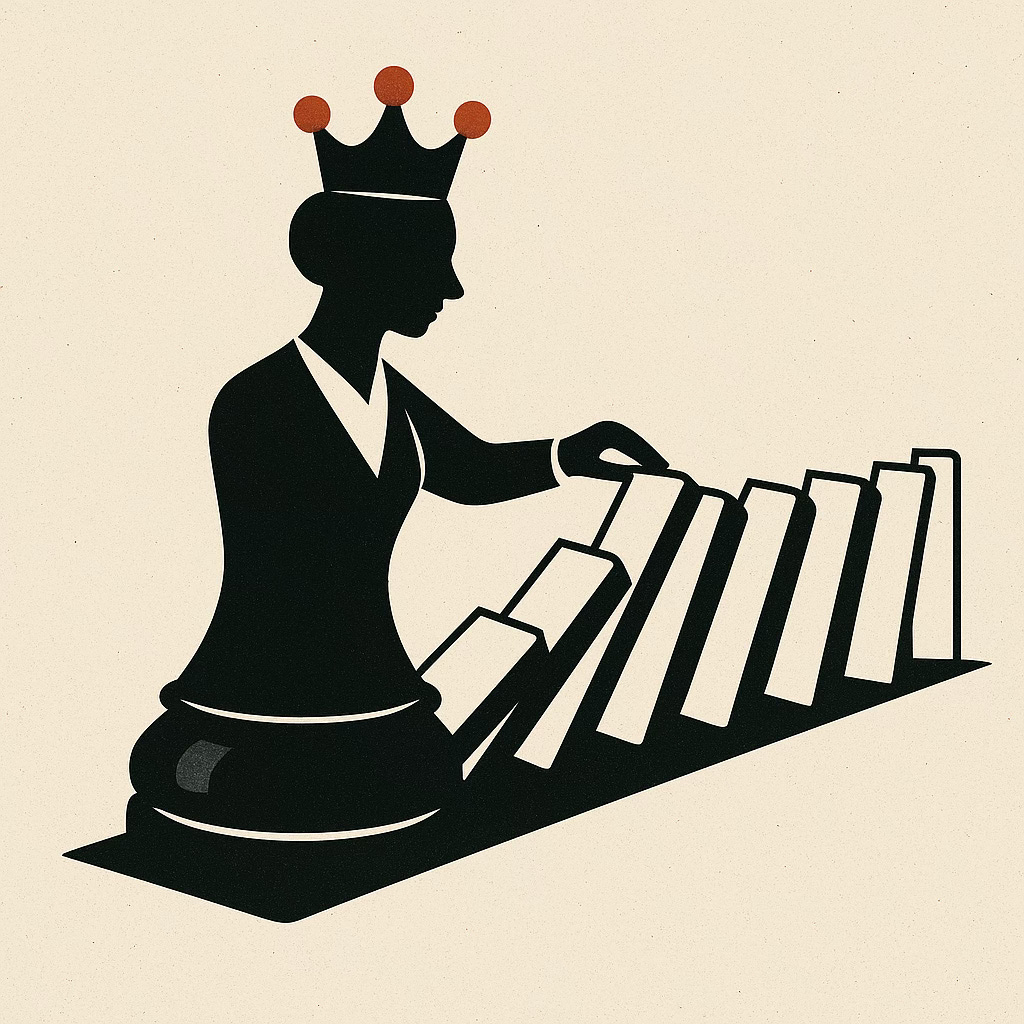As we move toward systems built on trust and cooperation, the way we work and live together… across teams, communities, and families… has never been more important.
Today, we’re talking about a psychological pattern that’s been quietly eroding those systems for years.
It slips through cracks in culture, thrives in ambiguity, and poisons trust from the inside out.
It’s called the Dark Triad - and once you learn to spot it, you start to see how it’s been shaping systems all along.
This isn’t about diagnosing others. It’s about defending the operating system… of your team, your organization, your relationships.
Because, if we can’t name it, we can’t build systems that resist it
🧭 EXPLORE
Adopt an Explorer’s Mindset: Zoom Out, Seek Higher Ground
Let’s start with a baseline.
DT = Dark Triad: the cocktail of Narcissism, Machiavellianism, and Psychopathy.
Not a metal band. Not a conspiracy theory.
A well-documented psychological model coined by Paulhus & Williams (2002) to describe a trio of socially aversive traits that thrive in competitive, opaque, or weakly governed environments.
These traits aren’t always easy to spot. Sometimes they come wrapped in charisma. Other times they hide behind competence. And in the early stages they often get rewarded.
Here’s the breakdown:
Narcissism: inflated self-importance, entitlement, and a need for admiration.
Machiavellianism: strategic manipulation, deceit, and exploitation of others for personal gain.
Psychopathy: lack of empathy, emotional coldness, impulsivity, and a tendency to exploit others without remorse—often masked by surface-level charm or social fluency.
In short: ego without empathy, strategy without soul.
You’ll find traces of DT energy in:
🌆 Corporate offices
🏥 Organizational org charts
💻 Startup teams
🏛️ Government bureaucracies
🎓 Academia
🏠 Family / friend dynamics
🌐 Online communities
This shows up in personal, professional, and even presidential realms.
Basically, any system where power is up for grabs and oversight is weak.
So why does it exist?
Because evolution didn’t design us for fairness. It designed us for survival.
DT traits exploit the cracks in systems, culture, and people.
They are parasitic, not adaptive. And in a high-trust world that requires real cooperation to solve real problems, they break things from the inside.
♾️ BALANCE
Tensions in the Terrain: What Happens When DT Meets a Team or Group
Once you walk the perimeter, you’ll notice it’s not always obvious who’s running DT code.
Sometimes it’s loud and brazen. Other times it’s subtle: hidden under charm, humor, or fake collaboration.
Let’s map the tensions at play:
✅ Healthy ambition vs. ❌ Narcissistic domination
✅ Strategic thinking vs. ❌ Manipulative control
✅ Emotional regulation vs. ❌ Callous disregard
If we try to meet force with force… manipulation with more control… we fall into the same trap.
Roadmap to a shared middle ground:
» Shared motivation over personal agenda
» Curiosity over certainty
» Trust over control
» Adventure with responsibility
This doesn’t mean being naive or nice.
It means being aware. Systems-aware. Pattern-aware.
Because high-trust environments aren’t soft… they’re selective.
They build in boundaries, transparency, and feedback loops to weed out DT behavior without killing the spirit of the team.
🌀 FLOW
Run the Experiment: DT Detection 101
Here’s how we spot (and contain) the Dark Triad energy before it corrupts the OS:
🔍 Recognize Patterns
Repeated triangulation (“I just thought you should know what they said…”)
Win/lose framing in cooperative contexts
Charm that disappears when there’s no audience
Overconfidence + underdelivery
❓ Ask Why
Why is this person seeking control in low-stakes situations?
Why is dissent punished with silence or exclusion?
Why does this person never apologize—but always “explain”?
🗒️ Take Notes
Literally. Keep a log. Systems thinkers don’t rely on gut alone.
Look for friction over time, not just isolated blowups.
🧪 Run Safe, Recoverable Experiments
Try transparent communication in small groups—see how they react
Remove ego incentives (credit, spotlight, hierarchy) and observe
Create opt-in collaboration opportunities with built-in feedback loops
If the behavior adjusts = adaptive.
If it escalates = extractive.
🛡️ FIELD NOTES
What to Do If You Spot One:
Most folks running DT code don’t know they are - because it serves a purpose for them (just not for anyone else), therefore… denial and blame are often unconscious defense strategies.
🚧 Avoid when you can: If they won’t engage honestly, disengage quietly. Stay in your lane. Let them drift.
🔒 Contain when you must: If you can’t ignore them (client, colleague, boss).. then just keep it transactional. Get in, get out. No room for entanglement
🌀 Support the willing: If they can see themselves objectively and actually want to change: Create a feedback loop. Offer both challenge and support. Test for openness.
Clarity over conflict. Boundaries over battles.
The OS only works if we stop feeding the viruses.
📚 Resources & Further Reading
Paulhus & Williams (2002) – The Dark Triad of Personality: Narcissism, Machiavellianism, and Psychopathy
Jonason et al. (2012) – The Dark Triad at Work: How Toxic Employees Get Their Way
Volmer et al. (2016) – The Bright and Dark Sides of Leaders’ Dark Triad Traits
Muris et al. (2017) – The Malevolent Side of Human Nature: A Meta-Analysis on the Dark Triad
Dutton, K. (2012) – The Wisdom of Psychopaths (Amazon Book Link)
Babiak & Hare (2006) – Snakes in Suits: When Psychopaths Go to Work (Amazon Book Link)
Got your own DT detection story? Drop your emoji in the chat or comments:
🧠 = I’ve seen it up close
🧯 = I’ve defused one
🧬 = I think I might be one (👀)
🧰 = Building my detection toolkit
Let’s keep the OS clean.







🧠